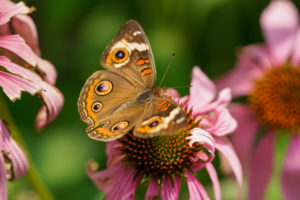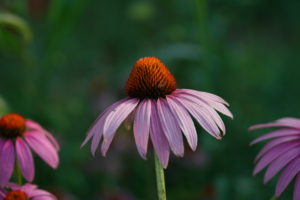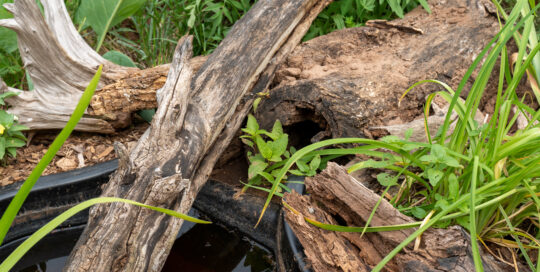Three reasons to add coneflowers to your garden
Views: 379

Coneflowers are wonderful plants for helping wildlife. Here are three reasons to add coneflowers to your garden.
They are easy to grow
Coneflowers, also known as Echinacea, are native to North America and are members of the daisy family. Hardy from zones 3-9, they are easy plants to grow, very forgiving of different light exposures, types of soils, and moisture content. They are drought-tolerant, yet also suitable for rain gardens in areas that don’t remain wet for long periods. An added bonus: many reseed easily, ensuring I have coneflowers in my gardens year after year.
It’s hard to find plants that do well in dry shade, yet my coneflowers tolerate full sun to part shade without much difference in bloom power. They thrive in a bed that receives morning sun with dappled afternoon shade. Ensure they get some sun throughout the day, and they will likely reward you.
There are many coneflower varieties and cultivars. I have planted cultivars such as “Pow Wow” and have had great success with them. They offer a variety of colors, from deep pink to orange. However, my favorites derive closely from, or come directly from native populations of Echinacea purpurea (L.) Moench.

Purple coneflower.
Commonly called “purple coneflower” or “Eastern purple coneflower,” Echinacea purpurea is native to the eastern half of the U.S., found both on the prairie and in open woodlands. In my yard, they bloom from late spring to early summer in a mass of deep pink to lavender color.
They attract butterflies and other pollinators
When blooming, my coneflowers are covered in butterflies. They are especially popular with ladies, skippers, swallowtails, and brush-footed butterflies like common buckeyes. They are also visited by native bees and hummingbirds.
Coneflowers are host plants to silvery checkerspot butterflies. I’ve also found gorgone checkerspot caterpillars on them, and they are host plant to certain moths. While caterpillars may do extreme damage to the foliage, typically they won’t kill the plant. I actually plant coneflowers to get the butterflies, so I don’t mind when I find them being eaten.
They attract birds
The third reason to plant coneflowers is this: they provide food for birds in fall and winter. My coneflowers finished blooming in mid August, and now I catch goldfinches and other birds eating the seeds every day. This will continue throughout the winter. (It’s probably good that most of the seeds get eaten. Otherwise they might be deemed too aggressive.)
And a bonus
I’ll add another great reason to plant coneflowers. They’re extremely beautiful.
Meet Leslie Miller
Leslie Ann Miller shares 3.5 acres in rural Oklahoma with birds, butterflies and wide variety of animals. She is currently transforming her yard with plantings…
Leslie's Recent Posts

Creating microclimates and microhabitats to benefit wildlife






